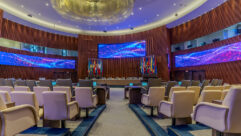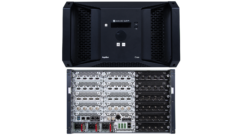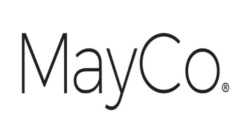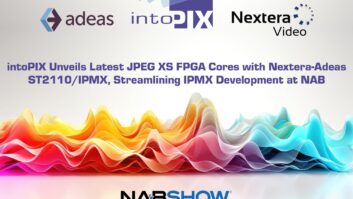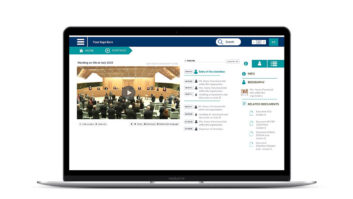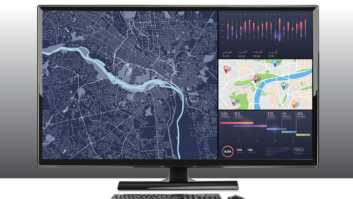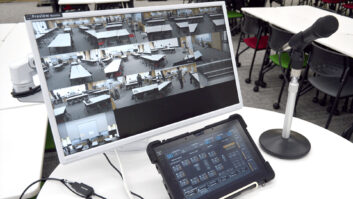Have It Your Way
Feb 1, 2002 12:00 PM,
Chris Doering
Different companies give the process different names — MTO, BTO, Custom Shop, Special — but most manufacturers of professional loudspeakers will let clients call the shots when they need something out of the ordinary. Mark Gander, JBL Pro’s vice president of marketing, points out that the need doesn’t have to be a major aesthetic issue or acoustic requirement. “A loudspeaker that’s custom-designed for the end user, even if it’s only a change of color or shape, can be a strong selling point. Custom loudspeakers can differentiate one contractor’s proposal from another in the customer’s eyes.”
CUSTOMIZED PRODUCTS CAN GIVE YOU A COMPETITIVE edge in landing profitable clients and niche projects. Many types of venues, like sports facilities and theaters, use custom loudspeakers. Japan’s Shizuoka Epoca Stadium, Ogasayama Sports Park, is filled with customized Apogee loudspeakers, and Experience Music Project’s Sky Church, home of the world’s largest Sony Jumbotron, has custom JBL line arrays. Casinos and themed attractions, too, often specify solutions that are not off-the-shelf. Take Disney’s California Adventure, where most of the EAW loudspeakers are heard and not seen thanks to clever cosmetic disguises.
The fact that these are all high-end, high-profit jobs is not lost on systems contractors, judging from the responses of the 10 professional loudspeaker manufacturers polled for this article. Those who offer customized products (the vast majority of the companies we surveyed) report that their custom business sales are steady or growing.
Customization Creates Differentiation
Loudspeaker customization bundles some design services with the basic manufacturing operations of building the enclosure, painting it, and assembling transducers, waveguides, grilles and hardware. As loudspeaker components continue to evolve, they also converge in terms of quality. It’s harder today to find dramatic performance differences that will make one brand stand out, especially when the end user may not recognize any of the brands proposed for a project.
Customization is one sure way to offer a unique product that can’t easily be compared on price and performance to other options. Loudspeakers are not the only manufactured product that is heading in this direction. In fact, Karl Brunvoll of Renkus-Heinz emphasizes that “every order we process is built to the customer’s specifications.”
The Big Questions
Even companies that don’t advertise custom speaker capabilities still can deliver items that aren’t on the price sheet. However, everyone handles customization differently, and the savvy designer or systems integrator would be well-advised to explore the following issues with a manufacturer’s representative or sales person:
Price Premium
Customization costs money, and manufacturers expect you and your client to pay for the extra value of customized manufacturing. But the percentage premium varies by manufacturer and by the degree of customization.
Customizable Design Features
Some manufacturers consider special paint colors or weatherized finishes part of their ordinary product options, while others consider them custom aspects. As for shape, almost any enclosure made of a manufactured wood product can be modified to fit architectural dimensions.
Molded enclosures using plastic or fiberglass materials offer a high degree of resistance to water, wind, sunlight and other wear and tear, but the shape, and often the color, of molded enclosures is determined by the fabrication process, so speakers are typically made in large batches. Therefore, unless you’re talking about a fairly large number of enclosures and a reasonably long time from order to delivery, molding tends to reduce your options and increase your costs.
Lead Time
“[Lead time is] where the rubber meets the road,” according to Eletro-Voice’s Kent Peterson. “How soon can I get it?” is a common question. Time and money are required to design, test and build a custom product. The number of working days between inquiry and order, and between order and delivery, will vary from project to project and, again, by the degree of customization involved.
Are you asking the manufacturer to adapt an existing design or develop a new configuration? Some manufacturers accommodate custom colors, input panels or other minor variations within the normal production process and at standard lead times. In general, the more unique your request, the longer it will take to deliver, and if your custom project is a new or almost-new design, you should allow three weeks or more once the order is placed. Renkus-Heinz aims to ship custom products in 10 working days. EV is another company that has focused resources on shortening lead times for customized speakers.
Ancillary Products
Is signal processing part of the loudspeaker system? Will the manufacturer configure it at the factory, or are you on your own at commissioning time? Can you get load-certified aluminum or steel hardware shipped with that oddly shaped enclosure, or do you have to find a machine shop? And don’t ignore the safety and liability issues involved in hanging custom loudspeakers above an audience. Community’s John Wiggins emphasizes that contractors should establish a relationship with a professional engineer in order to manage these issues.
Getting clear on these questions is critical because no two loudspeaker factories are set up exactly the same way. Some of the companies we talked to outsource custom paint or woodworking to third parties; others do it right next to the flow production line. Some have a fixed schedule window during which custom-color orders are painted; others deliver custom colors without any noticeable delay or extra charge.
Avoiding Customization Pitfalls
Of course, there’s no reward without risk. In the case of custom loudspeakers, you can’t afford to ignore the risks involved in ordering something that may never have been built (or even designed) before. It is critical that the client, the design engineers, the manufacturing people and you know the precise specifications of the custom loudspeaker. Invest plenty of time in communicating with your client and the customizer. It buys you a lot of insurance against things going wrong when it’s too late.
Know What’s Needed
If a custom product is called for, you ought to know why. Clearly define all of the details before you place your order: performance parameters, physical constraints, appearance, cable terminations, mounting and installation needs, intended use, environmental conditions, budget, life cycle of the installation.
Keep a Paper Trail
Checking, writing things down, and double checking will help you make sure that what the truck drops off at your job site is exactly what you ordered. Manufacturing operations are controlled through CAD drawings and databases, and all the speaker manufacturers we talked to use those same design tools to execute special orders. If you alter enclosure dimensions or hardware hang points, then CAD drawings are critical. At EAW, once a custom order is accepted, it goes through “EAW Engineering’s standard process, which includes a full bill of materials,” according to vice president of engineering, Stephen Siegel. CAD drawings with complete dimensions will be available at a fairly early stage in the process, and you should look at them alongside the relevant architects’ drawings at the earliest opportunity.
Communicate!
On the factory end, communication begins with the order itself. Make sure you are dealing with someone who speaks your language and has experience detailing custom speaker orders. Depending on the manufacturer, that person may or may not be your regular order entry contact. But like EV, most loudspeaker manufacturers are “filled with audiophiles, former FOH engineers and recording studio rats,” as Kent Peterson puts it, so you should be able to find someone who understands your goals and the terms you use to express them.
You might encounter a separate set of custom-order entry forms. Community’s custom order process, for example, has 26 steps. JBL Pro’s Custom Shop will even customize the ordering process if necessary, to capture all the information that the engineers may need. EV has put its custom order process on the Web.
Get Tested
Loudspeaker manufacturers do their own double-checking to make sure that a custom product lives up to brand-wide standards of reliability and performance. Tannoy applies its full gamut of design modeling, prototyping and measurement tools to major custom orders. Community’s large custom orders (which have ranged as high as 10,000 units) go through full electroacoustic documentation, listening tests and approval passes by consultants, contractors and internal engineers. At JBL Pro, custom speakers are subjected to the same battery of tests that catalog items must pass, including power tests and drop tests.
As a rule, the deeper you get into the guts of a loudspeaker, the harder it is to change what the engineers put in the bill of materials. In order to live up to their brand’s promises, engineers operate within certain parameters; and you’ll have a hard time convincing them to use a particular transducer, for example, or to design a new type of pattern control device. On the other hand, most companies will offer options along a price/performance curve. Manufacturers that build transducers as well as loudspeakers — like JBL, Community and EV — may be able to offer you more flexibility than companies that don’t. But again, every custom part can mean extra cost.
You must communicate with the factory on a custom order, but make sure your input is useful. It’s exciting to be involved in a major customization process, almost like designing your own loudspeakers. But you have your own set of responsibilities (like booking the next project), and the speaker engineers have theirs. “We work closely with customers to ensure the correct reproduction of their ideas and goals, while at the same time keeping tight control over performance issues,” says Apogee’s vice president of sales, Tim Thornton. “We will customize as required, but we won’t sacrifice quality,” Martin Audio’s North American sales manager, Rob Hofkamp, adds. These are polite ways of saying, “Let the engineers do their job.” Focus on communicating the specifics of your project, not developing the solution, and you may be surprised by the elegance of the solution your manufacturer devises.
First and Foremost, Know Your System
Before you start customizing a loudspeaker, you need to design the system. All loudspeaker manufacturers will use preliminary schematic drawings to help you decide what to order. Their suggestions will often be products straight from the catalog, sometimes supplemented by customized catalog products or unique custom solutions. Many loudspeaker companies work with Acoustic Design Ahnert’s EASE software and can help put together a client presentation and proposal. None of them will do your drawings, aiming, etc., though. Acoustical consultants have their responsibilities, too, and most are already experienced in partnering with loudspeaker manufacturers to develop a solution that delivers the maximum value for a client.
Give Customization a Try
Since EAW established its Acoustical Performance Partnership program a decade ago, customization has become a standard method for speaker builders to compete for spec-driven business. Manufacturers know that a custom spec is much harder to swap out during the bid process than one written around a standard catalog item and those two words loathed by sales managers — or equivalent.
In today’s competitive business climate, the last thing you want to be is just another commodity. Sourcing customized products is a good way to avoid me-too bids. Turning your proposal into a one-off, unique solution makes it harder for the client to shop based on price alone. It gives you credibility as a provider who can go beyond the basic services of bidding and installation, adding value that isn’t easy to find in the yellow pages. You will work harder to design, purchase and install a customized loudspeaker, and this is work that can pay you at a higher rate and generate a more impressive portfolio for landing future jobs.
The good news is that loudspeaker manufacturers are also competing for your order, and the majority of them will work with you to turn your customers’ dreams into customized products. When you need the extra edge to close a sale or win a competitive bid, the manufacturer will be ready to help.
In the 70s, Chris Doering built a pair of EV TL606 bass reflex cabinets, assembled the associated equalizer, and made sound. He has been writing about pro audio, in various capacities, for two decades. His marketing consultancy, Dynamic Market Systems, is on the Web athttp://dynmktsys.com.
Case Studies
Check Out These Successful Custom Installs
No custom speaker project is representative of all custom projects: If it weren’t unique in some respects, the job wouldn’t require a custom solution. But these case studies do illustrate some directions the custom loudspeaker process can take. Don’t be afraid to write your own scenario around custom speakers if you think it will help you win a profitable job.
1 American Airlines Center
Dallas, TX
Customization as Product Development
One reason manufacturers invest in customization is that custom loudspeakers are, on occasion, purchased by lead consumers. A lead consumer is a buyer who is willing and able to risk using untried technology in order to get out ahead of its market. Center Operating Company, owner of the American Airlines Center, a new NBA arena in Dallas, is such a customer. AA Center is the most expensive arena ever built, and in order to generate an adequate return on its investment over the facility’s life span, Center Operating Company deliberately set out to take advantage of the latest technology in all areas of multipurpose arena construction and operation.
Meeting COC’s goals presented the acoustical consultants, Wrightson, Johnson, Haddon & Williams with a challenge and an opportunity. The challenge was to bring concert-level sound to the arena. Normal NBA specs are in the range of 105 dB in the seating areas, falling sharply to 85 dB on the court. That’s hard enough to do with a distributed “exploded cluster” design, the sort that WJHW has created for arenas around the world. But for the AA Center, COC wanted a louder audience section and strongly preferred a continuous ring of loudspeaker enclosures around the enormous scoreboard to enhance the visual impact of the building’s centerpiece.
COC also required a sound system with tighter control over a wider frequency range than the current alternatives could provide. WJHW’s Jim Faber was charged with developing a new solution, and he opened discussions with a number of loudspeaker manufacturers in September 2000. At JBL, he discovered a new technology, called Precision Directivity, in the late stages of development. PD uses signal processing and predetermined driver spacing to control the directionality of mid- and low-frequency loudspeakers. Three of Harman Professional Group’s brands had to work together on this solution: JBL Professional built the loudspeakers along with some of the hanging hardware in its custom shop, Crown supplied the power amplification, and BSS SoundWeb handled the signal processing. PD was, in the opinion of the engineers who developed it, ready for prime time.
But it had never been installed or used in a real-world application. PD was exactly the kind of technology coc was looking for: a new solution that would be ahead of the market at time of installation and would remain at least equivalent to competing options for several years.
Although it was almost a year from the first inquiry to the opening, this project proceeded on a faster track than many large-scale construction projects. jbl received the purchase order from Pro Media/Ultrasound of Hercules, California, the winning bidder for the installation, in March and shipped the four-way PD system to Dallas in June. A month later, the house was rockin’! Faber points out that “this is the first arena to use a tour-sound type of audio system for its permanent installation, and AA Center sounds as good as any nba facility out there.”
A high-profile project like the AA Center is the perfect launch pad for a new technology like PD. By building the system in its Custom Shop, JBL was able to capture the knowledge acquired during the first production run. Presumably, that will come in handy if and when PD becomes the new state of the art in large-venue sound reinforcement.
2 U.S. House of Representatives
Washington, D.C.
Tight Space, Tighter Timeframe
When Larry Howard, Tannoy‘s director of business development, learned that the United States House of Representatives was about to choose a new loudspeaker for sound reinforcement in its chamber, it was only days before Al Lakomyj, audio manager for the House, was due to hold a shootout at the Capitol Building in Washington, D.C. Tannoy quickly supplied some of its CPA 5 speakers and was chosen for the unusual and prestigious application.
Winning the shootout was a mixed blessing: Tannoy then had just two weeks to supply 415 CPA 5s in custom enclosures with custom grilles and 70-volt line transformers. The custom enclosure was required because this project was an exact retrofit. While Signal Perfection Limited, the designer and installer, put in a whole new front end for the system, The Architect of the Capitol determined that the new speakers had to look identical to their predecessors. In a variation on pew-back design, the speakers fit underneath the chairs used by the Representatives, firing back and up at the occupant of the chair behind. The atypical mounting location was chosen because it minimized the distance between speaker and listener, allowing effective speech reinforcement at very low output levels. The location also maintained the décor in the House Chamber, which has remained essentially unchanged for the last 50 years.
The mounting points limited the size of the loudspeaker, so all the candidates had woofer cones that were 6 inches or smaller. The simple yet effective design of the CPA 5 uses a 5-inch cone driver with a concentric Inductively Coupling Technology tweeter. One voice coil and magnet structure powers the entire assembly, enhancing reliability. To morph its standard product into “speakers of the House,” Tannoy had to jettison its plastic molded enclosure, substituting custom MDF enclosures with birch front baffles that fit flush under the chairs while providing a useful upward aiming angle for the driver. Heavy-duty grilles protect the transducer from feet, vacuum cleaner nozzles and other floor-level hazards.
Tannoy installed custom-wound 70-volt transformers to accommodate SPL’s distributed audio design while fitting inside the limited enclosure space. Will Parry of SPL cites the extremely tight deadline and praises a “spectacular job” on the part of the manufacturer, adding that “in this case, the customization was required in order to meet the specifications set by The Architect of the Capitol. Fortunately, we were able to work with Tannoy to duplicate the existing loudspeaker enclosures and mounting points, which made that part of the installation much easier.”
As you’d expect with a project on such a fast track, communication was essential. spl took measurements in the House chamber and sent bolt hole drawings to Tannoy. The speakers went in without a hitch.


